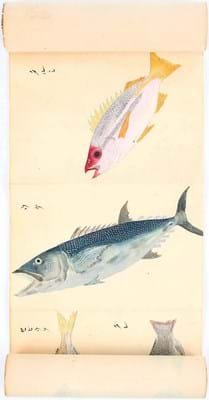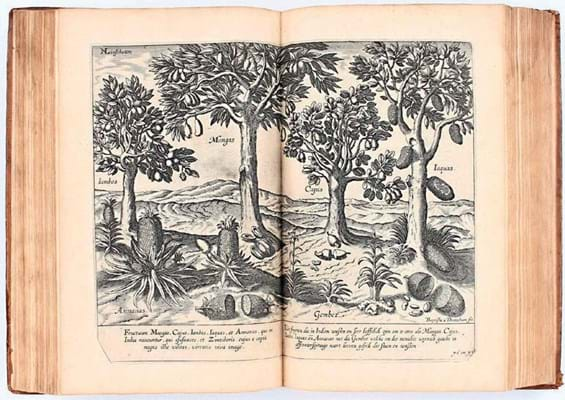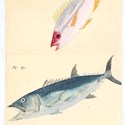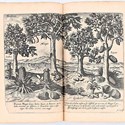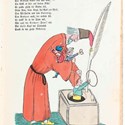
The catalogues produced by Reiss & Sohn (19% buyer’s premium) of Königstein im Taunus for a sale scheduled for the last three days of April had already been printed and distributed before the new restrictions on public access forced a postponement of the sale date.
In the event, that delay proved only a short one and, running to more than 3000 lots, this traditional spring sale took place via remote bidding from May 5-7.
Of the 'utmost rarity'
Somewhat crudely printed, lacking a number of pages and not in the best of condition, was a two-volume publication by two Hungarian mathematicians of 1832-33 that made a double-estimate €30,000 (£26,315).
Billed as a work of the utmost rarity, Testamen… was primarily the work of Farkas Bolyai, a mathematician teaching in Transylvania, but the key content is a 26pp appendix that contains an essay by his son, János.
It was János Bolyai (1802-60) who developed the concept of absolute geometry – “a generalised system of geometry free of Euclidian premises” – that came to be recognised by two much more famous figures in the field, Nikolai Lobachevskii and Carl Friedrich Gauss, as one of the truly great original contributions to mathematics.
A remarkable man, master of many languages and a serial duellist as well as a ground-breaking mathematician, Bolyai junior seems never to have published anything else, but left more than 20,000 pages of mathematical manuscript material when he died.
In 1998, an unopened subscriber’s copy of Testamen… in original wrappers and boards sold for $85,000 (then around £50,600) at Christie’s New York as part of the great Haskell F Norman library, and in 2011 Sotheby’s sold another example in Paris at €100,000 (then £83,330).
A first for Kant
An auction record €16,000 (£14,035) was paid for a 1781 first in contemporary half calf of Immanuel Kant’s Critik der reinen Vernunft, or ‘Critique of Pure Reason’ as it is known in the English-speaking world.
Although it was the work that would make Kant famous, it attracted little attention until it received its first review written anonymously by Enlightenment philosopher Christian Garve a year after publication. Controversy was sparked and it did persuade Kant to redefine some of his views in the second edition. This copy of the first bore a long list of earlier ownership inscriptions.
Sold at more than double the estimate was a rare work of 1789 by the naturalist and polymath, JJN Spalowsky. Featuring 25 coloured engraved plates, it amounts to a preview for a multi-volume work on natural history that he had in mind. In the end the project was only partly realised, but this rare prospectus reached €13,000 (£11,405).
Sold at €16,000 (£14,035) was an example of the enlarged German version (with Latin text) of Elizabeth Blackwell’s famous Herbarium… Issued in five volumes from 1750-60, with a supplement added in 1773 to give a total of 615 hand-coloured plates, it was here bound as three volumes.
A complete copy of Koberger’s 1493, first German language edition of the ‘Nuremburg Chronicle’ brought one of the sale’s higher bids at €60,000 (£52,630). Last seen at auction in New York over 70 years ago, it was a generally fine copy in an 18th century binding with old colouring to 50 or so leaves.
Once in the library of the German architectural historian and bibliographer, Bodo Ebhardt (1865-1945), a broad margined copy in slightly later vellum of the 1511, first illustrated edition of Vitruvius’ De Architectura…, edited by Fra Giocondo, made €16,000 (£14,035).
Among a great many cartographic lots, the most expensive was a 1584, Latin text edition of Ortelius’ Theatrum from the Plantin presses in Antwerp. With all maps in contemporary colour, it made €46,000 (£40,350).
Russia’s circumnavigation
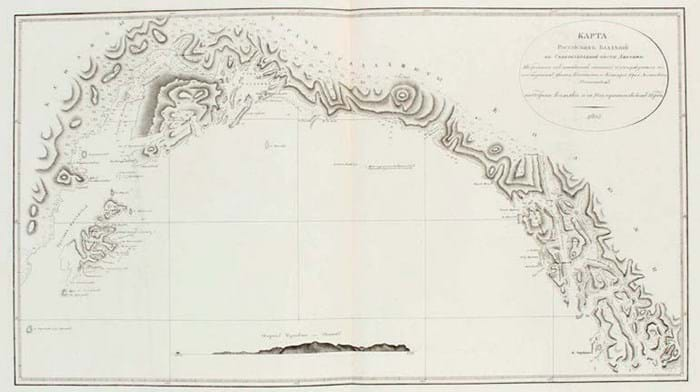
One of the ‘Russian Alaska’ charts from the Lisianski volume sold for €32,000 (£28,070) at Reiss & Sohn.
The map illustrated above was one of the 13 maps and charts in a publication of 1812 that followed the first Russian circumnavigation of the globe in 1803-06.
It was the atlas volume only of a larger report prepared by Yuri Lisianski, commander of the sloop Neva, who spent a year in what were then Russian possessions in America while expedition leader, Adam Johann von Krusenstern, was visiting Kamchatka and Japan in the Nadezhda.
The maps include Sitka Bay, or Novo-Arkhangelsk as it was then called, Kodiak and Chiniak Bay, along with others depicting Easter Island, the Marquesas, Hawaii and the Sunda Strait. This rare work sold for €32,000 (£28,070).


